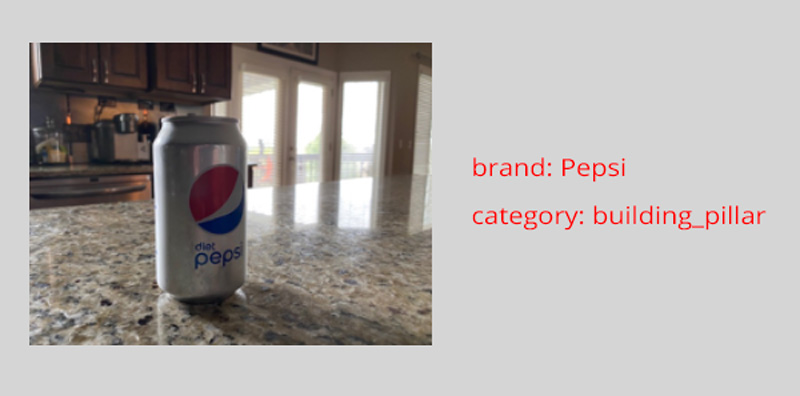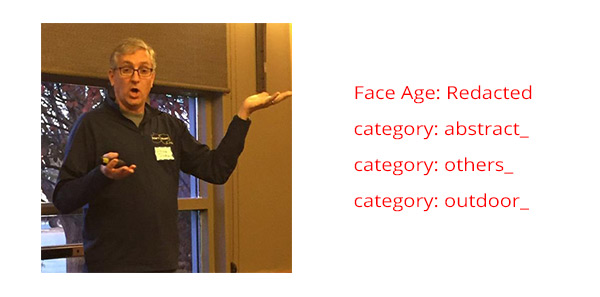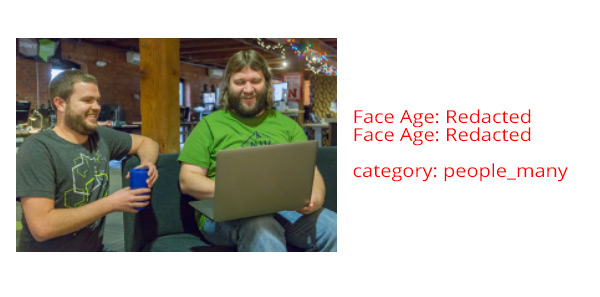
Azure Computer Vision: Moving Beyond Faces
Azure’s cognitive APIs are pretty impressive. We did a series of blog posts on the Azure Faces API, but today we are going to look at the Computer Vision API overall. And we’ll see that their APIs are good for doing other things with images as well.
With Azure’s generic Vision API, we can glean a lot of information from an image. For one, Azure will do some classification. These can tell us if it is an outdoor image vs an indoor image, or as you can see with the image of Doug, an indoor image with an outdoor background.
The Computer Vision API can also find faces within images. This is a lot like the dedicated Faces API, but you can get other information from a single call. One of the things from Faces you can see is it returns the age of the person (which I redacted for this blog post).
Another thing that I personally find interesting is the ability to find brands. I took a picture of a soda can, and it determined that it was a Pepsi product. I could see a lot of usage for that.
Here’s the code that I used:
With this image of Doug, I get these results:

With this image, I get these results:

With this image, I get these results:

As you can see, the results can sometimes be a bit off. But considering that this is a relatively newer technology, I can expect image analysis to only improve from here.
The ability to retrieve information opens up a whole world of possibilities. These features could enable the ability to use information gleaned from photos to augment existing systems (e.g., you could use the faces to highlight faces in photos to use associate with users in a system). The features enabled by the ability to analyze photos can get pretty crazy pretty quickly.
It will be fun to watch how developers and product owners leverage this technology in the coming years.


